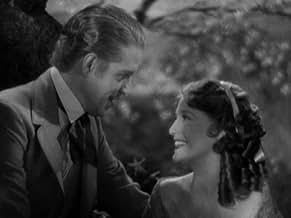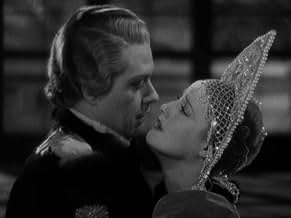ÉVALUATION IMDb
7,2/10
1,2 k
MA NOTE
Ajouter une intrigue dans votre langueAn aging opera singer looks back on her long life, including her relationships with her vocal teacher and a student.An aging opera singer looks back on her long life, including her relationships with her vocal teacher and a student.An aging opera singer looks back on her long life, including her relationships with her vocal teacher and a student.
- Nommé pour 2 oscars
- 2 nominations au total
Mariska Aldrich
- Opera Singer
- (uncredited)
Bernice Alstock
- Contralto in 'Success' Montage
- (voice)
- (uncredited)
Nick Angelo
- Tenor in 'Success' Montage
- (voice)
- (uncredited)
Martha Bamattre
- Lady in Bar
- (uncredited)
Scotty Beckett
- Maypole Singer
- (uncredited)
Eumenio Blanco
- Cafe Patron
- (uncredited)
Histoire
Le saviez-vous
- AnecdotesWhen filming began in 1936 (in color), the original opera finale was also recorded, staged and shot. This was to have been Act II of Giacomo Puccini's "Tosca", one of the few operatic works with major roles for baritone (Scarpia) and soprano as equals (Tosca). It also allowed Jeanette MacDonald to sing the famous aria "Vissi D'arte". By the time shooting recommenced in black and white, this idea was scrapped and replaced with an elaborate fake Russian opera "Czaritza" created by Herbert Stothart to music by Pyotr Ilyich Tchaikovsky, presumably to allow for a big Duet (in "Tosca", she murders Scarpia by stabbing him through the heart!). The rewritten story of "Maytime" presumably demanded it. Sadly, the Technicolor "Tosca" sequence does not appear to have survived, which is a pity as it would have been fascinating to see MacDonald and Nelson Eddy in a major operatic sequence and in color.
- GaffesDuring the ball scene, Marcia Mornay sings Les filles de Cadiz by Delibes at the command of the Emperor Louis Napoleon. However, the piece was not composed until 1874, whereas Louis reigned from 1852-1870.
- Générique farfeluOpening credits are shown on the water and on the bark of the trees.
- Autres versionsOriginally released in Sepia Platinum for Roadshow engagements, this was a process most famously used in the Kansas portions of 'The Wizard of Oz' and the Panama jungle scenes in 'The Sea Hawk'
- ConnexionsEdited into Cairo (1942)
- Bandes originalesNow Is the Month of Maying
by Thomas Morley, was published in 1595.
Very popular with madrigal groups.
First line, with 'fa la la' refrain, sung by children in park.
Commentaire en vedette
Because there was nothing suitable in the opera repertoire for a baritone and a soprano to sing together! And Romberg's music wasn't used because it was too expensive; practically everything in the film score was in public domain or composed for the film. Likewise, filming in color was nixed in a cost-cutting move (though, frankly, I can't imagine how this film could be any better in color!) Movie-making is all and always about compromise.
A little research into Herbert Stothart's tonal plan for this film will help you understand it better, if understanding the technicalities will help you appreciate it more. But just enjoy "Maytime" for what it is, not what it isn't. A lovely, opulent, romance treasure. Don't be afraid to like it!
A little research into Herbert Stothart's tonal plan for this film will help you understand it better, if understanding the technicalities will help you appreciate it more. But just enjoy "Maytime" for what it is, not what it isn't. A lovely, opulent, romance treasure. Don't be afraid to like it!
- dref4508
- 26 nov. 2007
- Lien permanent
Meilleurs choix
Connectez-vous pour évaluer et surveiller les recommandations personnalisées
- How long is Maytime?Propulsé par Alexa
Détails
- Date de sortie
- Pays d’origine
- Langues
- Aussi connu sous le nom de
- Cvetoči španski bezeg
- Lieux de tournage
- société de production
- Consultez plus de crédits d'entreprise sur IMDbPro
- Durée2 heures 12 minutes
- Rapport de forme
- 1.37 : 1
Contribuer à cette page
Suggérer une modification ou ajouter du contenu manquant




































